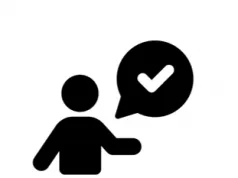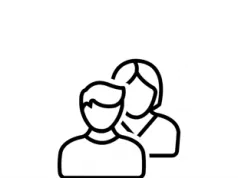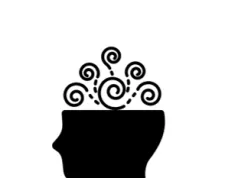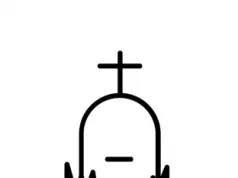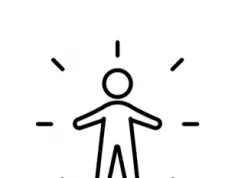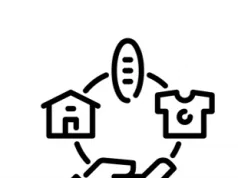Dialectical Behavioural Therapy is a type of therapy that has helped many people with their mental health. It was designed specifically by Professor Martha M. Linehan, and is commonly used by mental health professionals.
This type of therapy is predominantly used for Borderline Personality Disorder. However, it is also capable of treating other conditions, as we discuss in this article.

What is Dialectical Behavioural Therapy?
Dialectical Behavioural Therapy (DBT): DBT is a type of therapy that is tailor-made for Borderline Personality Disorder, though can also be useful for many other conditions. The therapy runs on the basis that an individual is emotionally vulnerable, and that the individual grew up in an environment where emotions were dismissed and not treated. These factors cause an individual to feel guilty or ashamed for having upsetting emotions, which leads to more upset. DBT aims to change this system, using a range of techniques to help, with a focus on acceptance and problem-solving.
The Positives of DBT
Because DBT was tailor made for Borderline Personality Disorder (BPD), it does fit very well with the various symptoms of BPD. DBT as a treatment for BPD has time and again been proven to be effective [1].
DBT involves the key areas of mindfulness, acceptance, emotional regulation and tolerating difficult events. These are all very useful for anyone suffering with ill mental health. By covering such a broad range of areas, DBT can help many facets of mental health.
It also possible too that DBT can bring about quick changes. While for many it will take time to see an improvement in mental health, some see a rapid, if slight, improvement after just a few weeks of DBT. These qualities make it stand out.
Which conditions can DBT help with?
DBT has the potential to be effective for a wide range of conditions. While it was specifically designed for those with BPD, it also has the potential to be helpful for other conditions too!
Borderline Personality Disorder: As mentioned, DBT is primarily designed for people with BPD. BPD is a condition which involves very intense relationships and unstable emotions. It can cause multiple problems in life. It has been proven to be one of the most effective treatment types for this condition. For example, DBT was found to be more effective than Mentalisation-based Therapy, which is another common BPD treatment [2].
Other Personality Disorders: DBT also has the potential to help with other personality disorders. Histrionic Personality Disorder and Antisocial Personality Disorder are potentially two conditions that could benefit from DBT. These are similar in some ways to BPD.
Post-traumatic Stress Disorder (PTSD): DBT may also have the potential to treat cases of PTSD. This is a condition that usually involves a person having disturbing or harmful thoughts about a past trauma. Research shows there is a crossover between PTSD and BPD, raising hope that DBT could be helpful for PTSD as well [3]. DBT does appear to be able to help a person cope more with trauma.
Others: Due to some of the similarities between BPD and Bipolar Disorder, it is possible that DBT may help those suffering from Bipolar Disorder. While medication is generally the best way of treating Bipolar Disorder, DBT could feasibly help. Depression has also been suggested as a potential treatable condition for DBT.
It is important to say that the above isn’t an exhaustive list. Instead, it is possible for anyone to see a benefit from DBT, but each individual person is different. There is no one size fits all approach to mental health.
Summary
As seen, DBT is a type of therapy that has many uses. While it may have originally been intended for BPD, it has since turned into a therapy that can treat multiple conditions. It has seen its popularity rise year-on-year.
With a strong evidence base and many supporters, there is no reason why DBT shouldn’t continue to thrive – whilst helping many people to see an improvement in their mental health.
Read Now
- Therapy Home
- Everything You Need To Know About Talking Therapy
- FAQ’s About Talking Therapy
- Dialectical Behavioural Therapy: Everything You Need to Know
- The Advantages and Disadvantages of Dialectical Behavioural Therapy
- 8 Things You Should Know About Dialectical Behavioural Therapy
- What Conditions Can Dialectical Behavioural Therapy Treat?
- Which Is More Effective for Borderline Personality Disorder: DBT or MBT?
Disclaimer
This website should be used purely for informational purposes, and does not intend to, nor should it ever, be used as a replacement for professional medical advice.
We strive to keep all of our pages updated, and ensure that our website is full of factual and in-depth information. However, we encourage you to browse this website with care.
As a reminder, this website and all content within it cannot and should not replace the advice of a trained medical professional. You can read our full disclaimer at this link.
Helplines
If you are struggling with your mental health, help is available. With the right support and treatment, you can make a recovery. For information on helplines, or if you are in a state of crisis, please visit our crisis page by clicking on the relevant link for your geographical location (United Kingdom), (United States), (International). You can also see how to get mental health treatment and the process involved by clicking this link.
References
[1] Stoffers-Winterling, J. M., Volmm, B. A., Rucker, G., Timmer, A., Huband, N., & Lieb, K. (2012). Psychological therapies for people with borderline personality disorder. Cochrane Database of Systematic Reviews. 8 (8): CD005652.
[2] Barnicot, K., & Crawford, M. (2019). Dialectical behaviour therapy v. mentalisation-based therapy for borderline personality disorder. Psychological Medicine, 49(12), p2060-2068.
[3] Harned, M. S., Rizvi, S. L., & Linehan, M. M. (2010). Impact of Co-Occurring Posttraumatic Stress Disorder on Suicidal Women With Borderline Personality Disorder. The American Journal of Psychiatry. 167 (10): p1210-1217.


